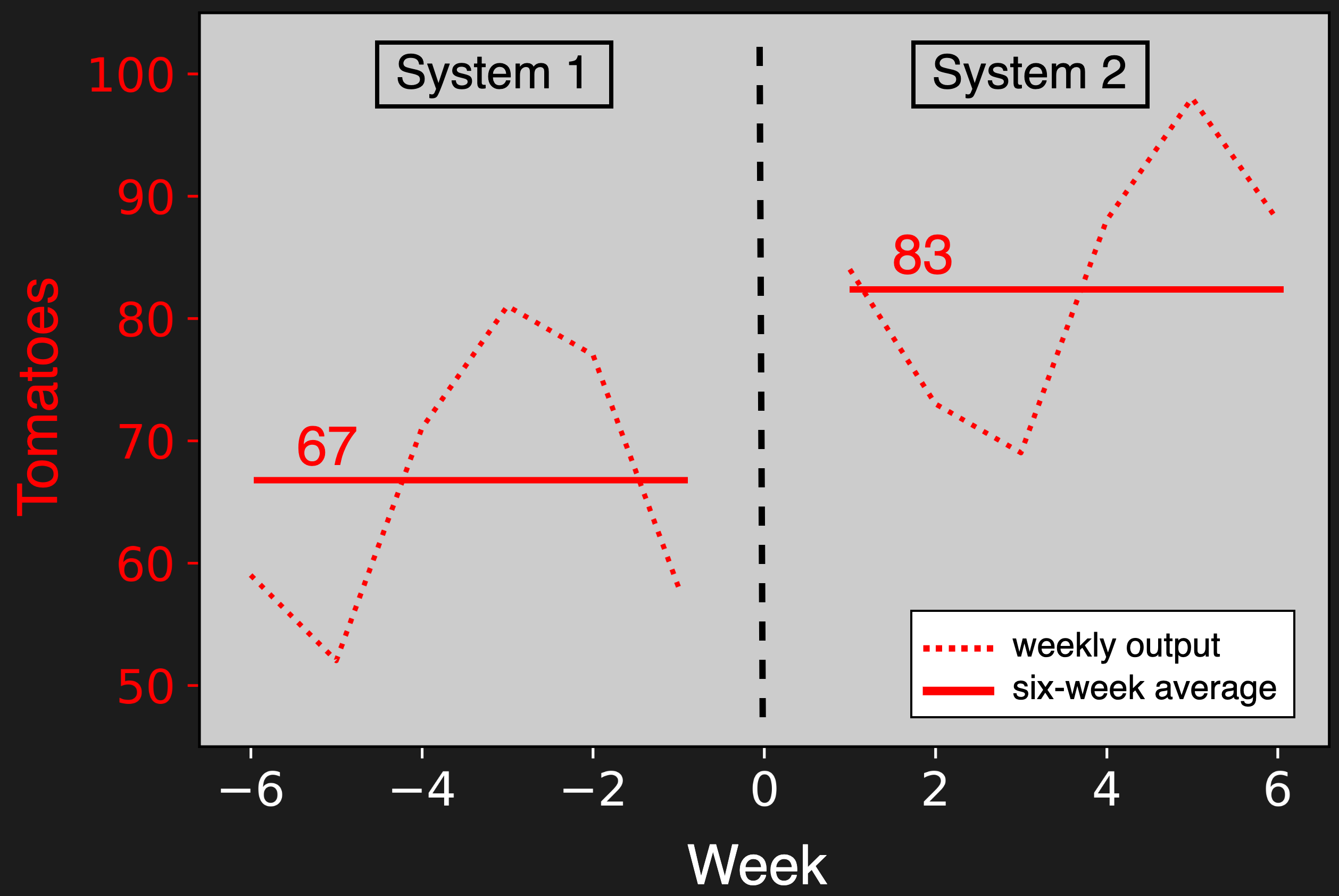pomodoro system design
establishing a more productive, balanced lifestyle
Years ago I was frustrated with how I worked, suffering from undirected time at my desk and undefined boundaries between my professional and personal life. I was not the efficient, balanced human I wanted to be.
Initially a quest to become more focused, this project completely shifted my orientation toward work—enabling me to establish boundaries and accept my finitude, despite always having more to do. Hopefully this journey toward improved productivity and balance can offer a nugget of insight for your own.

Pomodoro Method
The pomodoro method is a time-management technique which separates work into fixed intervals, referred to as “tomatoes” (pomodoro is Italian for tomato). Typical length for one tomato is 25 minutes. Critically, this time must be committed to pure work; if one becomes distracted or interrupted, the rule is to “squash” that tomato and re-start the clock. Personally, turning off notifications has been indispensable for avoiding squashes.
To track tomatoes, I use this simple web tool, which breaks one interval into three steps: (1) start the timer (2) work for 25 minutes (3) record what you did. It also provides the option for a five-minute break; instead I prefer to complete 4-8 consecutive tomatoes before taking a longer rest.

There are many pomodoro trackers out there, but I really like this one prompting “what did you do?” It forces me to pause and briefly consider how my current sub-task contributes toward the overall project. Many unproductive rabbit holes have been avoided this way. To depict how my time was used in 2022, I created a word cloud (see below).
Another unexpected benefit is that starting a tomato can help me overcome the activation energy for beginning work. Say I’m feeling tired, or there’s a task I just don’t feel like doing. I’ll negotiate with myself: “spend one tomato on this task; if afterward you’re still not in the mood, you can stop.” Almost always I’ll find my groove and become motivated.

To help create your own, here's my python script.
System Design
Now I’ll discuss how I’ve integrated the pomodoro method into my workflow, and how minor tweaks have made a big difference for my mental health and relationship with work.
System 1: daily quota
Initially I employed a simple system: each day, complete \(\geq n\) tomatoes. The quota may vary, but typically \(n=16\). Note I count essential meetings as one tomato, regardless of length; this makes the quota attainable on days my calendar is jammed.
Overall this approach empowered me to develop focus. However, I found it suboptimal in two scenarios:
- Not reaching the quota. Some days life pulls in a different direction. Clinging to a minimum feels overly rigid when other opportunities arise.
- Far exceeding the quota. There’s always more work, and I struggle knowing when to stop. Some days I’d do an unsustainable 25+ tomatoes. This often created an energy deficit which I’d later need to reconcile.
System 2: weekly quota + daily cap
Instead of a lower bound for the day, I now set one for the week (\(\geq 5n\) weekly) in addition to an upper bound each day (\(\leq n\) daily). That is, if I achieve \(n\), I must stop working that day. This system has been a huge improvement, and here’s why:
- Incentivizes an early start. Beginning my work day sooner creates more space later in the day.
- Motivates quick bursts. I’m eager to capitalize on short windows of time, e.g. given 30 minutes between meetings.
- Creates a clear end-of-day. Once my daily cap is reached, I feel confident surrendering undone tasks.
- Spreads responsibility across the week. It’s easier to accept lighter work days when something else comes up. My weekly quota usually isn’t reached by Friday, but I’m happy to work on the weekend if it means I can surf guilt-free on a Tuesday.
Funny enough, by setting a daily limit, I’m actually more productive overall (see graph below). Here’s an article discussing why “average speed” is more important than “peak speed.”

Not shown: an improvement in well-being.
Conclusion
The pomodoro method is a great productivity tool. More importantly for me, though, is that it provides a platform to actively improve my relationship with work. As a result, I’ve found it easier to accept my place as a finite creature surrounded by endless possibility.
If you’re curious to try, I recommend starting small, e.g. a single session of 1-2 tomatoes. Perhaps design experiments and record observations to learn what works for you. With so much of our lives spent working, bringing intentionality to how we work seems immensely important.
Acknowledgments
Thanks to Lina Colucci who initially inspired me to try the pomodoro method. I’m also grateful to Kyle Treige, a close friend and kindred spirit in designing systems of productivity.